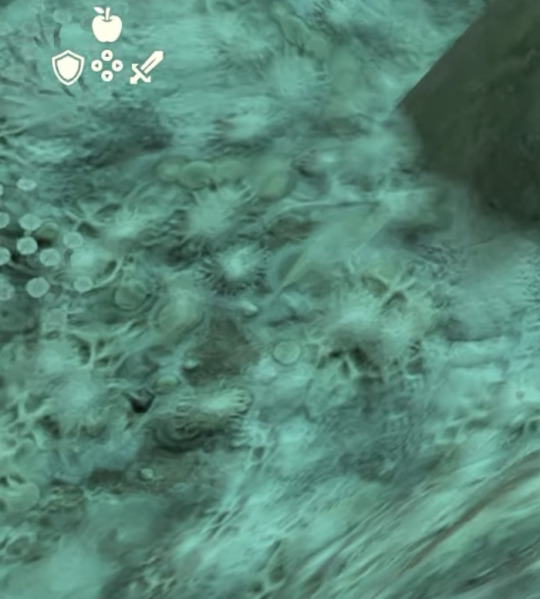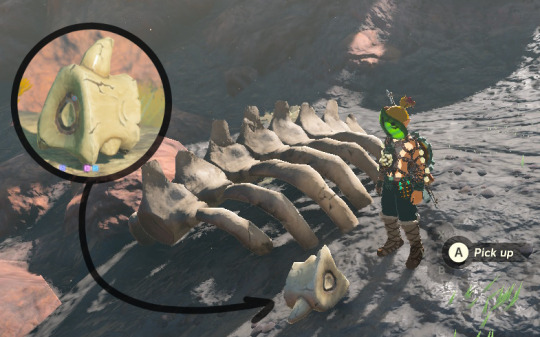#science-based decisions
Explore tagged Tumblr posts
Text
FDA Employees May Quit Over RFK Jr Leadership
Reports indicate that some employees at the Food and Drug Administration (FDA) are contemplating resignation in response to Robert F. Kennedy Jr.’s anticipated role in President-elect Donald Trump’s administration. Kennedy, known for his critical views on vaccines and the pharmaceutical industry, has expressed intentions to overhaul the FDA, including the potential elimination of entire…
#FDA employees#FDA resignations#federal agencies#mass exodus#pharmaceutical industry#policy shifts#public health#RFK Jr#science-based decisions#Trump administration#vaccine policies
1 note
·
View note
Text
A contemporary clinical reasoning and multi-dimensional approach of Lower back pain management by Dr. Sarma S.T in Journal of Clinical Case Reports Medical Images and Health Sciences
ABSTRACT
The incidence rate of low back pain (LBP) is expanding in every clinical context as it is a common musculoskeletal illness affecting the overall population although the frequency of back pain and functional impairment increasing with age. This leads to tremendous strain as it represents one of the leading causes for growing disability and major socioeconomic burden in almost every healthcare system globally thus an efficient back pain management strategy is an urgent priority. This review is to outline the common causes, associated risk factors, clinical presentation and contemporary clinical reasoning including multi-dimensions of pain aspects to assess the patients with low back pain for achieving the precise clinical decision making as it would be a provision to implement potential tactics to lower the socioeconomic burden of this musculoskeletal disorder on the healthcare service providers.
Keywords: Biopsychosocial model, Clinical decision making, Diagnostic triage, Evidence-based practice, Lower back pain
INTRODUCTION
Lower back pain is a collective musculoskeletal illness affecting the overall population although frequency of back pain and dysfunction take place with aging. The previous research advocates that LBP occurrence increasingly takes place with aging and incidence may be recognized to work-related physical activities too. Population-based studies have indicated that LBP remains global concern thus it challenges every nation. The occurrence of LBP is 84%[1] as this common condition affecting individual at some point in their live consequently seen in both primary and tertiary care clinical settings. Moreover, the 1-year prevalence of LBP in aging people range from 13 to 50% similarly, up to 80%[2] experience this substantial musculoskeletal pain and follow long-term healthcare facility. If the LBP continues more than three months, this is considered to be as chronic lower back pain but there are number of studies advocate that chronic pain is lasting beyond the expected natural healing time period and neglecting the timeline-based classification. The differential diagnosis is crucial as it provides the underlying pathological causes because LBP is a disease not a symptom. The back pain represents one of the leading causes globally for growing number of disability and major socioeconomic burden in almost every healthcare system. According to the Global Burden of Disease Study evaluation revealed that LBP accountable for many years patient lived with disability[3]. Another study estimated that approximately 97% of people experience back pain at some time in their life while around 62% is mechanical nature or non-specific but between 5 and 10% of cases [4] develops chronic LBP then it seems to be the primary focus on seeking health care services. This eventually leads to a wider-range of negative consequences not only individual suffering from LBP but also causing negative impact on national levels. It minimizes the person’s quality of life due to personal suffering and subsequent economic impact on health care system. In the long run, LBP leads to disability in the working population and severely impacts on their productivity subsequently loss their working days. The resultant cost and absenteeism from work along with LBP is a serious social concern.[5] The LBP has a wider-range of potential etiologies and the LBP symptomatology can be overlapped each other also depend on the patient population but among the mechanical nature and non-specific causes are most common. However, successful outcomes of LBP are dependent on precise differential diagnosis. It can be reached by detailed clinical history taking, knowledge of the regional anatomy, precise understanding of the pathology comprehensive physical examination and diagnostic studies.[6] A number of clinical guidelines show that potential success of conservative management for LBP approximately 70% [7] although in certain cases are required surgical intervention. Thus, the efficient LBP management strategy is an urgent priority as the alarming rate of socioeconomic burden of this musculoskeletal disorder for nearly all healthcare service providers in every nation in worldwide.
ETIOLOGY
There is a wider-range of potential causative factors for developing LBP in every population although these etiologies depend on the patient’s medical history, examination and investigation. However, it is advocated that commonly mechanical or non-specific nature of LBP and among a large incidence of mechanical back pain due to lumbago, paraspinal hypertonicity, degenerative disease, facet joint and sacroiliac joint dysfunction while disc prolapse, inflammatory diseases, osteoporosis, malignancy, nerve root compression, canal stenosis and infection are all part of the differential diagnostic procedure.[8] Even though the majority of back pain is mechanical or non-specific nature and somewhere 12-33% [9] of people experience back pain due to either a true red flag like caudaequina syndrome then it need to be the immediate focus on medical management. At present, a growing number of researches contend that the pain occurs because of other aspect like cognitive behavioral factors, thus this dimension must be taken into the back pain diagnostic procedures. Differentiating the nociceptive pain from neuropathic pain and psychogenic pain is an essential step to make precise differential diagnosis as it is a high priority before initiating any therapeutic approaches.[10] The important trait of LBP management is identification of red flags to avoid delay of appropriate intervention and ensure patient safety.[11] It is vital to have comprehensive understand on clinical presentation of individual back pain cases and identifying the typical red flags associated with back pain such as loss of neurological functions, bowel or bladder incontinence and sleep disturbance could help to establish optimistic therapeutic management. There are several interventional approaches are being applied to cure the lower back pain suffering though the recent research report reveals that the majority of back pain cases resolve naturally with certain time duration.[12]
RISK FACTORS
A greater number of studies claimed that varying evidence related to job demands such as lifting and twisting with weight, ethnicity, genetic predisposing factors and mental health issues are all associated with higher risk of back pain although there is a few evidence provided that women have a greater risk of lower back pain.[13] A recent cross-sectional study claimed that there is strong correlation between lower back pain and obesity have a strong relationship as obesity is one of the risk factor to develop back pain subsequent functional disability. However, it is contended that the incidence rate of lower back pain is high when there is high chance of psychological issues.[14] In addition to that this study postulated that there is high prevalence of lower back pain among people with sedentary lifestyle thus they conclude that physical activity help significantly to decrease lower back pain perception. The varying level literature evidence and the lack of a homogenous definition of back pain lead to challenge for clinicians to have definitive conclusion in related to back pain scenarios though the global survey testify that it is varied geographically.[15]
CLINICAL PRESENTATION
The type of pain can be classified easily in case of having clear picture of mechanism of injury like bruise of skin or broken bone unfortunately there are some type of pain mechanism seems to be vague particularly incase of chronic lower back pain. The lower back pain is classified as acute when it persists for up to six weeks period and it is considered as sub-acute when it is prolonged for up to three months. If the pain is persisted beyond three months is considered as chronic lower back pain because 3 months period is commonly required to natural healing.[16] The back pain is usually defined as local pain, spasmodic muscle tenderness between below the costal margin and above the inferior gluteal folds with or without having leg symptoms. The acute lower back pain is often occurred as the result of tissue injuries and patients suffer from acute back pain are unlikely to follow medical care because acute pain gets better on their own or with conservative treatment. The majority of cases are non-specific and this non-specific chronic lower back pain management needs a huge financial burden to every healthcare system globally. The diagnosis and treatment for patients with low back pain have variation within and between country’s clinical practice guidelines.[17]
CLINICAL DIAGNOSIS
The clinical history taking and comprehensive clinical examination are the most important tools for assessing lower back pain to narrow down the potential root causes of lower back pain subsequently arriving precise differential diagnosis.[18] The goal of diagnosis in lower back pain is to describe the root causative factor of anatomic pain unambiguously as possible also concentrating on wisely classified clinical subgroups with the understanding of pain nature. This is essential to organize the appropriate clinical questions, active listening and mapping out the location of the lower back pain. These are the key areas in the medical history taking helps to identify the present pain location and any changes since its onset.[11] Also it is needed to find out easing and aggravating of pain factors because these are important keys to arrive a precise differential diagnosis. Thus, it is essential for clinicians to have clear understanding on the difference between somatic and visceral pain nature. However, if pain does not fit to any known diagnostic profile there may be other factors like psycho-social issues need to be considered.[19]
INTERVENTIONS
The biopsychosocial model has pragmatic clinical care guide to achieve potential prognosis among the chronic musculoskeletal pain cases. Unfortunately, the majority of healthcare providers follow the biomedical focused clinical practice. This approach relies on the structural model as it is generally assumed that the cornerstone of musculoskeletal pain management is governed by the structural changes in the human body.[21] However, the biopsychosocial model focuses on both biomedical element and potential psychological and social effect to analysis individual patient’s back pain. This would help to achieve the optimistic clinical outcomes with shared-clinical decision making with patient ideas, expectations and concerns rather than solely on clinician’s decision. According to the Institute of Pain Medicine, chronic musculoskeletal pain has been acknowledged as association of nervous system instead of completely relies on structural changes.[22]
CONCLUSION
Biopsychosocial model is concentrated a lot of effects on pain related psychosocial factors because people thought, feeling somatosensory experience and social dimensions contribute to development of pain. However, it is an enormous energy paid out to understand structural chances that relates to pain over the decades indeed still chronic musculoskeletal disorders are magnifying an alarming rate consequently burden to almost every healthcare system. Therefore, identification of psychosocial factors involvement and interpretation related to chronic musculoskeletal painful scenarios can contribute to implementation of cost-effective successful pain management strategies and innovation of drugs that help us to cut down socio-economic burden regard to chronic musculoskeletal pain. Therefore, it is essential to shift from biomedical structural model treatment approaches to manage chronic musculoskeletal pain by considering the psychosocial component in every contact of low back pain scenario. Therefore, practicing efficient multimodality chronic lower back pain management pragmatic approaches based on biopsycosocial model is an urgent priority to reduce the socioeconomic burden to almost every healthcare provider as a result of pain reduction, avoid fear of movement and minimize pain catastrophizing would be achieved far better off quality of life in lower back cases.
AUTHOR’S CONTRIBUTION
The author has critically reviewed and approved the final draft and is responsible for the manuscript’s content and similarity index.
ETHICAL APPROVAL
The authors confirm that this review has been prepared in accordance with COPE roles and regulations. The Institutional Review Board review was not required because of the nature of this review.
Declaration of patient consent There is no patients participation in this study thus consent is not required.
Financial support and sponsorship This review has not received any funding or financial support from third party of the public and commercial sectors.
Conflict of interest There is no conflict of interest.
#Biopsychosocial model#Clinical decision making#Diagnostic triage#Evidence-based practice#Lower back pain#jcrmhs#Journal of Clinical Case Reports Medical Images and Health Sciences submissions#Clinical Images journal
4 notes
·
View notes
Text
taking comms tech thos year 💪💪 im so collin-pilled fr💪💪💪
#not art#hmm is basing my academic decisions on my kiddie obsessions the prudent thing to do? IDGAF#aand anyways i like taking classes like IT and computer sciences so it wasnt like. completely pikmin-rotted lol#will keep collin in my heart nonetheless 🙏🙏GET ME GOOD GRADES FAT BOY ❤️❤️❤️#i hopes there are cute computers there..#my classroom crushes always end up being pieces of technology teehee 🐱#wait what what was i talking about
2 notes
·
View notes
Text
this is an incredibly low stakes pet peeve but i hate when people refer to the sun as Sol and the moon as Luna as if those are their proper names. no. they are literally called The Sun and The Moon. other languages have their own names for them, and no One language is the correct one.
like i'll admit when i was a fledgling astronomy nerd back in like middle school i was on that sol luna shit but i was looking at it heavily through the lens of science fiction and "aw how lame that they don't have real names." but like, why are we judging things based on how lame they are. our home galaxy is literally called the milky way. it doesn't get any lamer than that. just embrace the lameness.
#brot posts#astro posting#names like these aren't like actual science. they're just names#so like in regards to pluto i argue that being upset over its classification based on lameness is anti science#but like. its not that deep for things like this#since its not really science its more just . cultural understandings of astronomy#but i do still hold that making these decisions based on lameness is just. tired. cut it out#'the sun is called sol because we live in the solar system' girl thats just linguistics#helio denotes The Sun just as much as sol does#ie heliocentric. helium. etc#but no one ever argues that the sun is called Helios do they ??#anyway saw someone sum this phenomenon up as sol/luna being more 'poetic' names rather than actual scientific names#and i guess that highlights what irks me: when people try to claim then that their poetic names are their actual scientific ones#like no. The Sun and The Moon /are/ their scientific names. cut it out !!!
4 notes
·
View notes
Text
It continues to trip me up how much human brains are just weird organic computers
#thoughts#oni talks#oni vents#additionally wild that the easiest ways for me to explain brain stuff are generally in computer or video game terms despite the fact I’m#notoriously awful with computers (and to a lesser extent video games) although I won’t if my natural inclination would be different if I#didn’t have trauma related to computers/if maybe it’s the classic adhd interest based learning difference? unknown tbh#I still really wanna go to school to study people but academics is fucked as hell so making that work will be a personal hell for me#but also I have so many theories and data I can’t do anything super tangible with coz I’m not in an academic setting so even if i wanted to#talk about stuff and work on it no one would take me seriously w/o that academic background no matter how much effort I’d put in learning it#on my own for my entire life at this point it won’t matter if it’s not on some level acknowledged by an academic system I despise tbh#it’s one of those things that makes me miss my dad coz we used to commiserate together about these sorts of things tho he made it work far#better than I have been able to. i wish i could ask him science questions again.#anyway human brains are so fascinating but also I really wish I was better at explaining myself analysis of people I feel like I’m good#enough at this point to be like partway understood coz I’ve done so much practice on my own coz I tend to rehearse explanations ahead of tim#but its still often misunderstood or misconstrued & it’s understandable a lot of the time coz like most other people aren’t spending a ton#of their free time thinking about and researching how people work/analyzing those around them+themselves vs me whose been doing since like#I dont remember the exact time but I do remember being really young & making the conscious decision to study & analyze my family for example#so that I could be helpful & translate their words to each other better + ppl often don’t see things about themselves that others do#also forever thinking about the human brain/experience in relation to the sims & video game commands lmao#currently trying to explain save states in the human brain to ppl but no one knows wtf I’m talking about#& researching academic terms that are close to what I want doesn’t necessarily work if there’s no academic term for what I’m talking about#hence wanting to do the research myself coz sometimes it feels like there’s all this stuff that’s obvious to me but no one else?? from what#I’ve seen in recent studies they are only starting to scratch the surface of stuff I’ve already known sometimes? other stuff is older & it’s#VERY gratifying when it’s stuff I’ve known but not been listened to about & it actually gets the proper recognition#though getting ppl to actually listen/take what I say seriously is its own journey & I have to be careful myself bc I’m human so my own#understanding/data is constantly updating + I have storage issues so finding the data I have in my brain is its own struggle sometimes#every version of me is interested in people & I think that’s neat even if other people don’t understand that concept#sometimes I feel like an alien/robot whose sole task is just to study & support humanity & it’s very weird tbh
2 notes
·
View notes
Note
Hiya! I was wondering if you knew of any literature about reforming the psych system because I agree its broken AF and as someone who's a part of it I want to be able to do better. No worries if not, I just saw posts you've reblogged and thought you'd be a good person to ask!
i do have some recommendations!
"mind fixers: psychology's troubled search for the biology of mental illness" by anne harrington and "comfortably numb: how psychiatry is medicating a nation" by charles barber both give a history of the medicalization of mental illness and critique the biomedical model. (hint: there's a lot of BAD science that makes up the core of psychiatry - the evidence for there being a biological basis for mental illness and psych meds working at all is very flimsy.)
the disorderland podcast debunks bad science, especially pop science, talks about the commodification of mental health, and explores whether the symptoms we pathologize are actually symptoms.
"madness and oppression" by fireweed collective is a workbook that helps you see how you're not crazy -- you're oppressed. it looks at how what a psychologist/psychiatrist would consider a symptom is actually a very rational and normal response to being oppressed.
"on your own: patient-controlled alternatives to the mental health system" by judi chamberlain is written by a psych survivor, and goes into her own experiences as well as what alternatives exist to the system. great for learning about peer support!
"stolen" by elizabeth gilpin is a memoir by a psych survivor. she was abducted and taken to a "treatment" program in Appalachia, then went to a boarding school that functioned more like a prison with abusive group therapy. this one's good for humanizing mental illness BUT can be triggering as hell to psych survivors - so proceed with caution.
"the zyprexa papers" by jim gottstein is probably my favorite on the list, it's about how the antipsychotic zyprexa causes diabetes and metabolic disorders, and is still commonly prescribed (this is how i got diabetes). it shows how psych med regulations are not enforced, especially since zyprexa is often prescribed off-label for conditions it hasn't been shown to be clinically effective for, and has led to death in some cases.
madinamerica.com is a good site to explore for psych abolition, debunking psychology research, new psychology research that centers patient's autonomy and rights, and personal accounts of mental illness. it's been around for a decade so there's a lot of quality content to sift through!
i also recommend reading about peer support and peer respite houses - i don't have any particular books or articles about them, but that can be a good jumping off point to looking for an alternative model to the current psych system.
#i say this all with the caveat that i am a psych abolitionist NOT a reformist#i encourage you especially to read the first two#it's really important to understand that the evidence we have for mental disorders/diagnoses are vastly unsupported by the science#that aims to prove them#if you are not a psych survivor i encourage you to read pieces by psych survivors#it's important to humanize the people you're working with/learning about and it also helps paint a picture of the abuse we experience#i HOPE that after engaging with the system you start to see that it's not broken it's working as intended#psychiatry is a form of social control#it is dehumanizing#it inherently takes away your autonomy because diagnoses call your capacity to decide things for yourself into question#we are often belittled#told we're crazy#minimized#talked over#told we couldn't possibly make responsible decisions for ourselves#ETC#AND psych wards function as a prison#like there is no way for the system to be reformed because the system is based on the idea that there is something inherently wrong with us#and there isn't#the symptoms we experience are actually NORMAL parts of the human condition#psych abolition#antipsychiatry#actually delusional#actually disabled#actually psychotic#mad
11 notes
·
View notes
Text
Harnessing the Power of Science for the SDGs: Evidence-Based Implementation Successes Worldwide.
This year, during the High-Level Political Forum 2024 (HLPF) country delegations, the scientific community, NGOs, and other key stakeholders reconvene for a second time to continue discussing the role of science in SDG acceleration. Science Day is an initiative co-convened by SEI, UNDP, UN SDSN, ISC, and UN DESA to position the need for including scientific evidence in the decision-making around the Sustainable Development Goals and Agenda 2030.
Watch Science Day 2024 - Harnessing the Power of Science for the SDGs - Evidence-Based Implementation Successes Worldwide (HLPF 2024 Side Event)!

#UNHQ#conference room 3#Science-based action#sdg9#innovation#sustainable development#global goals#role of science#scientific evidence#stockholm environment institute#undesa#united nations sustainable development network#International science council#panel discussion#side-events#HLP2024#scienceday#decision making
0 notes
Text
Bridging the AI Trust Gap
New Post has been published on https://thedigitalinsider.com/bridging-the-ai-trust-gap/
Bridging the AI Trust Gap
AI adoption is reaching a critical inflection point. Businesses are enthusiastically embracing AI, driven by its promise to achieve order-of-magnitude improvements in operational efficiencies.
A recent Slack Survey found that AI adoption continues to accelerate, with use of AI in workplaces experiencing a recent 24% increase and 96% of surveyed executives believing that “it’s urgent to integrate AI across their business operations.”
However, there is a widening divide between the utility of AI and the growing anxiety about its potential adverse impacts. Only 7% of desk workers believe that outputs from AI are trustworthy enough to assist them in work-related tasks.
This gap is evident in the stark contrast between executives’ enthusiasm for AI integration and employees’ skepticism related to factors such as:
The Role of Legislation in Building Trust
To address these multifaceted trust issues, legislative measures are increasingly being seen as a necessary step. Legislation can play a pivotal role in regulating AI development and deployment, thus enhancing trust. Key legislative approaches include:
Data Protection and Privacy Laws: Implementing stringent data protection laws ensures that AI systems handle personal data responsibly. Regulations like the General Data Protection Regulation (GDPR) in the European Union set a precedent by mandating transparency, data minimization, and user consent. In particular, Article 22 of GDPR protects data subjects from the potential adverse impacts of automated decision making. Recent Court of Justice of the European Union (CJEU) decisions affirm a person’s rights not to be subjected to automated decision making. In the case of Schufa Holding AG, where a German resident was turned down for a bank loan on the basis of an automated credit decisioning system, the court held that Article 22 requires organizations to implement measures to safeguard privacy rights relating to the use of AI technologies.
AI Regulations: The European Union has ratified the EU AI Act (EU AIA), which aims to regulate the use of AI systems based on their risk levels. The Act includes mandatory requirements for high-risk AI systems, encompassing areas like data quality, documentation, transparency, and human oversight. One of the primary benefits of AI regulations is the promotion of transparency and explainability of AI systems. Furthermore, the EU AIA establishes clear accountability frameworks, ensuring that developers, operators, and even users of AI systems are responsible for their actions and the outcomes of AI deployment. This includes mechanisms for redress if an AI system causes harm. When individuals and organizations are held accountable, it builds confidence that AI systems are managed responsibly.
Standards Initiatives to foster a culture of trustworthy AI
Companies don’t need to wait for new laws to be executed to establish whether their processes are within ethical and trustworthy guidelines. AI regulations work in tandem with emerging AI standards initiatives that empower organizations to implement responsible AI governance and best practices during the entire life cycle of AI systems, encompassing design, implementation, deployment, and eventually decommissioning.
The National Institute of Standards and Technology (NIST) in the United States has developed an AI Risk Management Framework to guide organizations in managing AI-related risks. The framework is structured around four core functions:
Understanding the AI system and the context in which it operates. This includes defining the purpose, stakeholders, and potential impacts of the AI system.
Quantifying the risks associated with the AI system, including technical and non-technical aspects. This involves evaluating the system’s performance, reliability, and potential biases.
Implementing strategies to mitigate identified risks. This includes developing policies, procedures, and controls to ensure the AI system operates within acceptable risk levels.
Establishing governance structures and accountability mechanisms to oversee the AI system and its risk management processes. This involves regular reviews and updates to the risk management strategy.
In response to advances in generative AI technologies NIST also published Artificial Intelligence Risk Management Framework: Generative Artificial Intelligence Profile, which provides guidance for mitigating specific risks associated with Foundational Models. Such measures span guarding against nefarious uses (e.g. disinformation, degrading content, hate speech), and ethical applications of AI that focus on human values of fairness, privacy, information security, intellectual property and sustainability.
Furthermore, the International Organization for Standardization (ISO) and the International Electrotechnical Commission (IEC) have jointly developed ISO/IEC 23894, a comprehensive standard for AI risk management. This standard provides a systematic approach to identifying and managing risks throughout the AI lifecycle including risk identification, assessment of risk severity, treatment to mitigate or avoid it, and continuous monitoring and review.
The Future of AI and Public Trust
Looking ahead, the future of AI and public trust will likely hinge on several key factors which are essential for all organizations to follow:
Performing a comprehensive risk assessment to identify potential compliance issues. Evaluate the ethical implications and potential biases in your AI systems.
Establishing a cross-functional team including legal, compliance, IT, and data science professionals. This team should be responsible for monitoring regulatory changes and ensuring that your AI systems adhere to new regulations.
Implementing a governance structure that includes policies, procedures, and roles for managing AI initiatives. Ensure transparency in AI operations and decision-making processes.
Conducting regular internal audits to ensure compliance with AI regulations. Use monitoring tools to keep track of AI system performance and adherence to regulatory standards.
Educating employees about AI ethics, regulatory requirements, and best practices. Provide ongoing training sessions to keep staff informed about changes in AI regulations and compliance strategies.
Maintaining detailed records of AI development processes, data usage, and decision-making criteria. Prepare to generate reports that can be submitted to regulators if required.
Building relationships with regulatory bodies and participate in public consultations. Provide feedback on proposed regulations and seek clarifications when necessary.
Contextualize AI to achieve Trustworthy AI
Ultimately, trustworthy AI hinges on the integrity of data. Generative AI’s dependence on large data sets does not equate to accuracy and reliability of outputs; if anything, it’s counterintuitive to both standards. Retrieval Augmented Generation (RAG) is an innovative technique that “combines static LLMs with context-specific data. And it can be thought of as a highly knowledgeable aide. One that matches query context with specific data from a comprehensive knowledge base.” RAG enables organizations to deliver context specific applications that adheres to privacy, security, accuracy and reliability expectations. RAG improves the accuracy of generated responses by retrieving relevant information from a knowledge base or document repository. This allows the model to base its generation on accurate and up-to-date information.
RAG empowers organizations to build purpose-built AI applications that are highly accurate, context-aware, and adaptable in order to improve decision-making, enhance customer experiences, streamline operations, and achieve significant competitive advantages.
Bridging the AI trust gap involves ensuring transparency, accountability, and ethical usage of AI. While there’s no single answer to maintaining these standards, businesses do have strategies and tools at their disposal. Implementing robust data privacy measures and adhering to regulatory standards builds user confidence. Regularly auditing AI systems for bias and inaccuracies ensures fairness. Augmenting Large Language Models (LLMs) with purpose-built AI delivers trust by incorporating proprietary knowledge bases and data sources. Engaging stakeholders about the capabilities and limitations of AI also fosters confidence and acceptance
Trustworthy AI is not easily achieved, but it is a vital commitment to our future.
#abby#ai#ai act#AI adoption#AI Ethics#AI integration#AI systems#anxiety#applications#approach#Article#artificial#Artificial Intelligence#assessment#bases#Bias#Building#Business#compliance#comprehensive#content#continuous#court#data#data privacy#data protection#data quality#data science#data usage#decision making
0 notes
Text
The Time Is Right For Change ~ Your Part in Transforming Yourself in Personal Growth & Development and Healing Our Planet ~ 13D MDT ™ June Class ~ 3 Seats Available
You help everyone else. Here is the opportunity to release, renew and rejuvenate yourself. Discover more about your Self. The world needs you. Practitioners in all levels Reiki, Prana Healing, Qigong, Holistic Counseling, Hypnosis, Naturopath, and all other holistic healing therapists are welcome, as well as anyone who feels called to take these classes. The deadline for registration for this…

View On WordPress
#13D MDT#Basic Master Teacher#drop fear#Energy classes#fear#fear based decisions#hands#healing#heart#Light#Love#mind#multidimensional#New Paradigm#New Paradigm MDT#New Paradigm Multidimensional Healing#personal growth and development#prana healing#Qigong#Reiki#release fear#School of Esoteric Sciences#tai chi#transformation
0 notes
Note
Oh, oh! Something I just learned is that when Isaac Newton was doing stuff with refracted light in the mid 1660s, he decided that there should be seven colors, not the culturally defined five colors (red, yellow, green, blue, violet).
Why seven colors, you ask?
'Cause he thought light should be like music, with seven notes! He added orange and indigo so his seven colors would fit with the scale in the Dorian mode. And those specific colors as the colors of light still get talked about today as ROY G BIV, which is admittedly catchier than RYGBV.
So wild!
If you could make a new color what would you name it and how does it sound more real than magenta.
oh oh oh!! I have a really cool fact as part of my answer!!
Okay, so you know how colour is a spectrum, right? Your eyes only REALLY perceive blends of three base colours- red, blue, and green. (Yes, green.) All other colours are blends of these three primaries- red and green make yellow, red and blue make magenta, and blue and green make cyan.
As you mentioned, magenta is a ""fake"" color- this is because colours are made of waves! The waves on the red end of the spectrum are Low Frequency and the waves on the blue end are High Frequency. You'd *think" halfway between both wavelengths would be the result, but that's green, and we already have a colour for green! So to fix this paradox, the line from red to blue becomes a circle and we see magenta instead!
Now again, this spectrum- it looks like this:

And most of the world recognizes the six listed colours as distinct. Which means that we take this blended gradient and add hard lines, like this, to clearly separate them from each other:

BUT, not all societies do this!! There are some whose languages don't *have* different words for "blue" or "green", and as a result, people raised speaking these languages have a REALLY HARD TIME distinguishing between what we recognize as "obviously" either green OR blue.
THEIR colour spectrum looks like this:

Which is correct and valid and makes COMPLETE sense, because we argue about differences in colour all the fucling time- "is this dark blue or dark purple", "is this neon yellow or neon green", and "is this orange or red" are some common examples. Any of those in-betweens could be treated as whole and distinct blocks with distinct boundaries.
And so, I propose this:

We merge orange and red cause i can't be fucking arsed
#color#color theory#isaac newton#I just finished reading Kassia St Clair's The Secret Lives of Color#and this was mentioned in a footnote#and I keep thinking about this#It was so arbitrary!#and like#we think of Newton as a proper science guy#(I mean#but this decision was based on vibes only#plus the placement of the new colors where the Dorian half steps/semitones are?#just... what?!#(I mean it's clever to be sure)#(but still)
2K notes
·
View notes
Text
The thing about JD Vances 'cat lady comment' that gets a little obscured by 'you have angered the cat ladies' is that when asked about it he clarified.
And doubled down.
That it wasn't about cat ladies, but the fact that that they are childless, and the sense that someone who has no children cannot possibly have a stake in the future of this country.
I found out this year that I cannot have children. Not on purpose, not by accident, not by science and not by miracle. There is a fibroid the size of a grapefruit in my uterus that has given my reproductive organs so much trauma that there's no possibility of carrying a child to term. The only way to remove it is with a hysterectomy.
For me, this decision was easy. But when my gynecologist spoke to me about it, they gave me a box of tissues, expecting it to take a lot more emotional bargaining. They were surprised that the decision was so easy for me.
I don't want children. I never have. I never 'wanted them someday.' I will probably not adopt.
But I understand how many people do- and why the news of infertility would make someone upset.
When assigning a value to someone based on their status of parenthood, you are including people who want, desperately, to have children but for whatever reason cannot.
To say that I, or anyone without children, could be apathetic about the future of the country is saying the quiet part out loud. Perhaps he was unconcerned until he had children of his own. But the thing is, you don't have to have a family legacy in order to want good things for the future.
You just have to have a heart.
Which I've got.
4K notes
·
View notes
Text
Primary dural-based parafalcine diffuse large b-cell lymphoma mimicking meningioma by Amr El Mohamad in Journal of Clinical Case Reports Medical Images and Health Sciences
Abstract
Background: Primary dural-based diffuse large B-cell lymphoma is very rare. Only few cases were reported in the literature. Case presentation: Herein, we present a case of an immunocompetent patient with primary dural-based diffuse large B-cell lymphomas mimicking meningioma associated with ghost tumor phenomenon without any evidence of a systemic lymphoma. Conclusion: Primary central nervous system lymphomas are rare. Clinicians should always consider this lesion as a differential diagnosis if radiological findings are not indicative of typical one meningiomas.
Key words: Dural-based tumor, diffuse large B-cell lymphoma, ghost tumor, MATRIX regimen, central nervous system.
Introduction
Primary central nervous system lymphomas (CNSLs) (PCNSLs) are rare and account for 2%–5% of all brain tumor cases, whereas secondary CNSLs are more common [1,2]. One study has shown that the most common intraparenchymal histological type is diffuse large B-cell lymphoma, as among 26 patients with PCNSL, 25 had diffuse large B-cell lymphoma [3]. Although primary dural-based lymphomas are rare, the most common area of involvement is the cerebral hemispheres. Most dural-based lymphomas are secondary and present as extra-nodal systemic diffuse large B-cell lymphomas. Primary dural-based lymphomas are usually histologically marginal-zone lymphomas, representing a group of lymphomas that have been historically classified together because they appear to arise from post-germinal center and marginal-zone B cells and share a similar immunophenotype, and few cases were reported to be diffuse large B lymphomas [4]. Here, we present a case of an immunocompetent patient with primary dural-based diffuse large B-cell lymphomas mimicking meningioma associated with ghost tumor phenomenon without any evidence of systemic disease.
Case Presentation
A 58-year-old male individual previously healthy and immunocompetent presented with headache, recurrent vomiting, and memory problems lasting for 3 days. No loss of consciousness, seizure, subjective weakness, or fever was observed. On physical examination, the patient’s Glasgow coma scale score was 15; his pupils were 3 mm in diameter, equal, and reactive; and the patient had nominal aphasia without motor and sensory deficit. He had normal cerebellar functions, and cranial nerve exams revealed no deficit. Head computed tomography (CT) (Fig. 1) showed a 2.2 × 3.8 cm (transverse × anteroposterior) iso-dense lesion with internal hypodensity in the left parasagittal frontal region extending to the right frontal region. Extensive perilesional edema was observed with effacement of the sulci and mass effect on bilateral frontal horns, associated with 3-mm midline shift. Head magnetic resonance imaging (MRI) showed an isointense parasagittal lesion on T1 and heterogeneous intense on T2, with redemonstration of perifocal edema (Fig. 2). Head T1-weighted imaging with contrast enhancement (Fig. 3) showed a large, left frontal, parafalcine, irregular-shaped mass located below the superior sagittal sinus level. It measured 4 × 3 × 3.3 cm in anteroposterior, mediolateral, and craniocaudal, respectively. It showed diffusion restriction (Fig. 4). There was central hyperintensity on T2-weighted imaging, without post-contrast enhancement area representing cyst formation. It exerts a mass effect characterized by effacement of the adjacent sulci, compression of the left lateral ventricle, and a 3-mm shift of the midline structures to the right side, and the impression of our neuroradiologist was atypical meningioma. Regarding extensive edema, dexamethasone was started at a dose of 4 mg, thrice a day, and the patient was planned for craniotomy and resection of the tumor. Initially, the patient was reluctant to undergo surgery; however, subsequently, the patient agreed to undergo surgery after approximately 10 days. During surgery, parasagittal craniotomy was performed; however, to our surprise, no definite mass lesion was found at the proposed site, in contrast to the findings described on imaging. The falx was thinned out and partly deficient. A biopsy sample was obtained from this abnormally appearing falx. Moreover, we obtained biopsy samples under neuronavigation guidance from abnormally appearing tissue, which was completely intra-axial, deep down in the lesion visualized on navigation. On postoperative day 1, MRI head with contrast enhancement (Fig. 5) showed that the previously seen lesion had a significant regression in size. Its right frontal extension and adjacent enhanced meningeal tail showed size reduction. Moreover, some regression in the perilesional vasogenic edema was observed. A significant regression in the previously described enhancement was noted at the left-side lentiform nucleus and external capsule. The MR spectroscopy study showed an increased choline/N-acetyl aspartate ratio and elevated lactate level within the lesion.
The histopathology results of the first brain biopsy samples (Figs.6–7) obtained from the falx cerebri showed meningothelial hyperplasia with calcification and focal perivascular lymphocytic infiltrate composed of small and large, atypical lymphocytes. Immunohistochemical staining was performed; however, the area of interest disappeared. The pathology team recommended another fresh biopsy to have the final diagnosis and flowmetry studies. So, the patient underwent redo craniotomy using the same incision, and multiple biopsy samples were taken. The second fresh brain biopsy (Figs. 8–9) showed multiple brain fragments with predominant perivascular atypical lymphoid infiltrates. Most cells were medium to large with moderate cytoplasm, atypical irregular nuclei having vesicular chromatin, variably prominent nucleoli, and several mitoses, including atypical one. Necrotic areas were also seen. Immunohistochemistry of the second biopsy (Fig.10 A-D) showed that atypical perivascular cells were positive for CD45, CD20, CD79a, BCl2, BCl6, MUM1, OCT2, and C-MYC, and negative for CD10, CD21, TDT, ALK1, EBV-LMP1, CD3, and CD5; however, few reactive/residual lymphocytes were positive for these enzymes. Moreover, 80% of lymphoid cellular nuclei were positive for Ki67. These findings were consistent with diffuse large B-cell lymphoma, not otherwise specified.
Whole-body positron emission tomography (PET) showed intense fluorodeoxyglucose (FDG) uptake higher than that in the healthy brain cortex, without evidence of coexisting systemic disease. In addition to PET scan, contrast-enhanced chest, abdomen, pelvis CT did not show any other lesions in the body; furthermore, workup for viral markers and autoimmune conditions were all unremarkable, thus confirming the diagnosis of “primary dural-based diffuse large B-cell lymphoma,” distinguishing it from secondary CNSL. The patient was transferred to the Oncology Department and started on three cycles of the methotrexate, cytarabine, thiotepa, and rituximab (MATRIX) protocol, which is the current standard treatment regimen for PCNSLs [5]. Three months after the diagnosis and after receiving two cycles of the MATRIX protocol, brain MRI with contrast enhancement (Fig. 11A, B) showed regression of the lesion, and PET scan showed complete metabolic resolution in terms of decreased FDG activity of the previously seen PCNSL without signs of lymphoma activity elsewhere. Subsequently, the patient received the third cycle of the MATRIX protocol without specific complications. Two weeks later, autologous stem cell transplantation (50 × 106/kg) was performed as part of the consolidation phase of treatment. Six weeks later, conditioning chemotherapy with carmustine–thiotepa was administered, followed by stem cell infusion (CD34 = 12 million/kg). The post-transplant course was complicated with mucositis, folliculitis, diarrhea, febrile neutropenia, and prolonged thrombocytopenia. Two months after transplantation, PET scan was repeated and showed complete metabolic resolution of initially seen PCNSL involvement. Currently, the patient is being followed by the hematology team; the patient is in good health and remission. The last outpatient follow-up was 8 months after the first surgery. The patient was seen by the vascular surgery (for permcath removal) and oncology teams. At this time, the patient was stable with complete remission; then, the patient was lost to follow-up. Another head MRI was performed and showed almost total regression of the lesion.
Discussion
Lymphomas in CNS are classified as primary, arising de novo from brain parenchyma, leptomeninges, eye, and spinal cord and as secondary to systemic lymphoma, which can be dural-based lesions. Secondary CNSLs are more common than PCNSLs. Most PCNSLs are intraparenchymal diffuse large B-cell lymphomas with a predilection to occur in the frontal lobe and then deep nucleic and periventricular locations; the infratentorial cerebellum is the most common location. However, primary dural-based lymphomas are rare, and even when found, they are histologically marginal-zone lymphomas. Few cases of primary dural-based diffuse large B-cell lymphoma have been reported in the literature [4,6]. Furthermore, PCNSLs are more common in immunocompromised patients with a mean age of 34 years, and they occur in immunocompetent individuals at an older age with a mean of 52 years [7]. The patient in this case report was 58 years old and immunocompetent without significant previous medical conditions. The latest review of the literature on primary dural-based lymphoma has been conducted by Quinn et al., who have found only 24 reported cases of primary dural-based diffuse large B-cell lymphoma, which confirms the rarity of the disease and subsequently the limited knowledge regarding this disease entity [8]. CNSLs have rapid response to steroids with shrinkage in size and initial remission [9]. Moreover, the initial response to steroids is associated with a better response to chemoradiotherapy and good prognosis [9]. In the patient in this case report, there was an unintentional delay of surgery for approximately 10 days, and the patient was on steroids (dexamethasone). In this case report, the failure to identify a discrete lesion of the size expected as perceived on initial imaging, despite proper surgical planning using neuronavigation, was probably due to the rapid regression of the tumor in response to steroids. This phenomenon agrees with the scientific literature reporting about the disappearance of lymphomas in response to steroids (ghost tumors) [10,11]. The pathogenesis of primary dural-based lymphoma remains unknown as there is no lymphoid tissue in the dura. It is hypothesized that it is related to chronic infection, autoimmune disease, or chronic inflammatory condition, which recruits polyclonal lymphocytes resulting in monoclonal lymphomas [6]. In contrast, the patient in this case report did not have any chronic conditions. All workups were negative, including the entire viral panel and autoimmune markers. Basic research is needed to determine the etiology of PCNSL, especially dural-based lymphomas. In the patient in this case report, the initial radiological findings were mimicking those of a meningioma: dural-based and uniformly enhanced. There was significant surrounding edema, significant diffusion restriction, and blooming in susceptibility-weighted image, which goes more with higher-grade meningioma or another high-grade lesion. One review has shown that primary dural-based lymphomas can display the “dural tail “sign, further confusing the preoperative diagnosis with meningioma [12], which did happen in the patient in this case report. Therefore, we suggest that in case of a dural-based lesion that has non-typical features of grade 1 meningioma, clinicians should consider lymphoma in the differential diagnosis and avoid steroids unless necessary due to edema and mass effect keeping in mind the ghost tumor phenomena of lymphoma.
The role of surgery in PCNSLs is limited mainly to histological diagnosis through biopsy or tumor debulking in case of increased intracranial pressure or impending brain herniation. Some studies have shown no benefit of complete surgical resection of PCNSLs; however, a recent systematic review of 244 articles has shown evidence in support of cytoreductive surgery [13]. Previously, whole-brain radiotherapy (WBRT) was the recommended treatment; however, this treatment modality resulted in a high rate of relapse and a decrease in performance status and cognitive impairment, and with the improvement in survival with high-dose methotrexate, WBRT is no longer recommended. Currently, newly diagnosed PCNSLs are initially treated with induction chemotherapy until complete radiological response, followed by consolidation therapy, to prolong the overall survival [14]. The International Extra Nodal Lymphoma Study Group-32 trial has shown that a methotrexate-based MATRIX regimen results in a good outcome and control rate in PCNSL [5], and it is the standard induction chemotherapy. Ferreri AJM, in his article “The role of autologous stem cell transplantation in PCNSL” has compared various consolidation phase treatment modalities, including beam radiation, carmustine–thiotepa regimens, and autologous stem cell transplantation, and the results showed that autologous stem cell transplantation resulted in good outcomes [15]. The patient in this case report showed a good response to treatment with almost total resolution of PCNSL with three cycles of MATRIX chemotherapy, followed by conditioning chemotherapy with stem cell infusion.
Conclusion
PCNSL is a rare entity. Clinicians should always consider it in differential diagnosis of meningioma if the radiological findings are not typical for meningioma. When there is a high index of suspicion of lymphoma, repeating neuroimaging, particularly MRI, before surgery, especially if the surgery is delayed while the patient is on steroids, may help develop a better management plan while dealing with this rare lesion. In case of lesion disappearance, falx biopsy can be an option. The aim of surgery in PCNSL is mainly biopsy or debulking to decrease intracranial pressure in case of significant mass effect.
List of abbreviation:
Primary central nervous system lymphomas (PCNSLs)
Central nervous system lymphomas (CNSLs)
Head computed tomography (CT)
magnetic resonance imaging (MRI)
positron emission tomography (PET)
fluorodeoxyglucose (FDG)
whole-brain radiotherapy (WBRT)
#Dural-based tumor#diffuse large B-cell lymphoma#ghost tumor#MATRIX regimen#central nervous system#jcrmhs#Clinical decision making#Is Journal of Clinical Case Reports Medical Images and Health Sciences PubMed indexed
1 note
·
View note
Text
me: i have too much religious trauma to work with a story about angels/demons/etc and that's fine. ive got at least three separate OC universes, i don't need to ponder another one
*sees one piece of really cool religious artwork*
me, weak and self-indulgent: oh god, oh fuck
#hi im posting a lot today and i was gonna apologize#but tbh i think week long silences and then three days of nonstop text posts is part of my charm#anyways.....yes im weak and i might consider working with a world where angels/demons could exist#bc i dont think i can squeeze them into any of the current ones w/o a lot of upheaval?#i mean technically i havent at all thought about the lore for my timetravel/spacestation murder mystery story#besides the fact that timetravel exists and therefore it doesnt coincide w any of the main universes#i was thinkin that 'verse would be more science/sci-fi based rather than my fantasy ones tho#and idk if i can make angels work within that context#i dont like having lots of universes 😔#ive always worked w/ the idea that i would pour all of my effort into just 2 or 3 very well thought out universes#......and then the horrors of having story inspiration that cant fit in said worlds#idk i guess for now i'll just compile my ideas within my 'random story ideas' doc#and it'll stay in limbo until i make a decision
1 note
·
View note
Text
Expert agencies and elected legislatures

If you'd like an essay-formatted version of this post to read or share, here's a link to it on pluralistic.net, my surveillance-free, ad-free, tracker-free blog:
https://pluralistic.net/2024/11/21/policy-based-evidence/#decisions-decisions

Since Trump hijacked the Supreme Court, his backers have achieved many of their policy priorities: legalizing bribery, formalizing forced birth, and – with the Loper Bright case, neutering the expert agencies that regulate business:
https://jacobin.com/2024/07/scotus-decisions-chevron-immunity-loper
What the Supreme Court began, Elon Musk and Vivek Ramaswamy are now poised to finish, through the "Department of Government Efficiency," a fake agency whose acronym ("DOGE") continues Musk's long-running cryptocurrency memecoin pump-and-dump. The new department is absurd – imagine a department devoted to "efficiency" with two co-equal leaders who are both famously incapable of getting along with anyone – but that doesn't make it any less dangerous.
Expert agencies are often all that stands between us and extreme misadventure, even death. The modern world is full of modern questions, the kinds of questions that require a high degree of expert knowledge to answer, but also the kinds of questions whose answers you'd better get right.
You're not stupid, nor are you foolish. You could go and learn everything you need to know to evaluate the firmware on your antilock brakes and decide whether to trust them. You could figure out how to assess the Common Core curriculum for pedagogical soundness. You could learn the material science needed to evaluate the soundness of the joists that hold the roof up over your head. You could acquire the biology and chemistry chops to decide whether you want to trust produce that's been treated with Monsanto's Roundup pesticides. You could do the same for cell biology, virology, and epidemiology and decide whether to wear a mask and/or get an MRNA vaccine and/or buy a HEPA filter.
You could do any of these. You might even be able to do two or three of them. But you can't do all of them, and that list is just a small slice of all the highly technical questions that stand between you and misery or an early grave. Practically speaking, you aren't going to develop your own robust meatpacking hygiene standards, nor your own water treatment program, nor your own Boeing 737 MAX inspection protocol.
Markets don't solve this either. If they did, we wouldn't have to worry about chunks of Boeing jets falling on our heads. The reason we have agencies like the FDA (and enabling legislation like the Pure Food and Drug Act) is that markets failed to keep people from being murdered by profit-seeking snake-oil salesmen and radium suppository peddlers.
These vital questions need to be answered by experts, but that's easier said than done. After all, experts disagree about this stuff. Shortcuts for evaluating these disagreements ("distrust any expert whose employer has a stake in a technical question") are crude and often lead you astray. If you dismiss any expert employed by a firm that wants to bring a new product to market, you will lose out on the expertise of people who are so legitimately excited about the potential improvements of an idea that they quit their jobs and go to work for whomever has the best chance of realizing a product based on it. Sure, that doctor who works for a company with a new cancer cure might just be shilling for a big bonus – but maybe they joined the company because they have an informed, truthful belief that the new drug might really cure cancer.
What's more, the scientific method itself speaks against the idea of there being one, permanent answer to any big question. The method is designed as a process of continual refinement, where new evidence is continuously brought forward and evaluated, and where cherished ideas that are invalidated by new evidence are discarded and replaced with new ideas.
So how are we to survive and thrive in a world of questions we ourselves can't answer, that experts disagree about, and whose answers are only ever provisional?
The scientific method has an answer for this, too: refereed, adversarial peer review. The editors of major journals act as umpires in disputes among experts, exercising their editorial discernment to decide which questions are sufficiently in flux as to warrant taking up, then asking parties who disagree with a novel idea to do their damndest to punch holes in it. This process is by no means perfect, but, like democracy, it's the worst form of knowledge creation except for all others which have been tried.
Expert regulators bring this method to governance. They seek comment on technical matters of public concern, propose regulations based on them, invite all parties to comment on these regulations, weigh the evidence, and then pass a rule. This doesn't always get it right, but when it does work, your medicine doesn't poison you, the bridge doesn't collapse as you drive over it, and your airplane doesn't fall out of the sky.
Expert regulators work with legislators to provide an empirical basis for turning political choices into empirically grounded policies. Think of all the times you've heard about how the gerontocracy that dominates the House and the Senate is incapable of making good internet policy because "they're out of touch and don't understand technology." Even if this is true (and sometimes it is, as when Sen Ted Stevens ranted about the internet being "a series of tubes," not "a dump truck"), that doesn't mean that Congress can't make good internet policy.
After all, most Americans can safely drink their tap water, a novelty in human civilization, whose history amounts to short periods of thriving shattered at regular intervals by water-borne plagues. The fact that most of us can safely drink our water, but people who live in Flint (or remote indigenous reservations, or Louisiana's Cancer Alley) can't tells you that these neighbors of ours are being deliberately poisoned, as we know precisely how not to poison them.
How did we (most of us) get to the point where we can drink the water without shitting our guts out? It wasn't because we elected a bunch of water scientists! I don't know the precise number of microbiologists and water experts who've been elected to either house, but it's very small, and their contribution to good sanitation policy is negligible.
We got there by delegating these decisions to expert agencies. Congress formulates a political policy ("make the water safe") and the expert agency turns that policy into a technical program of regulation and enforcement, and your children live to drink another glass of water tomorrow.
Musk and Ramaswamy have set out to destroy this process. In their Wall Street Journal editorial, they explain that expert regulation is "undemocratic" because experts aren't elected:
https://www.wsj.com/opinion/musk-and-ramaswamy-the-doge-plan-to-reform-government-supreme-court-guidance-end-executive-power-grab-fa51c020
They've vowed to remove "thousands" of regulations, and to fire swathes of federal employees who are in charge of enforcing whatever remains:
https://www.theverge.com/2024/11/20/24301975/elon-musk-vivek-ramaswamy-doge-plan
And all this is meant to take place on an accelerated timeline, between now and July 4, 2026 – a timeline that precludes any meaningful assessment of the likely consequences of abolishing the regulations they'll get rid of.
"Chesterton's Fence" – a thought experiment from the novelist GK Chesterton – is instructive here:
There exists in such a case a certain institution or law; let us say, for the sake of simplicity, a fence or gate erected across a road. The more modern type of reformer goes gaily up to it and says, "I don't see the use of this; let us clear it away." To which the more intelligent type of reformer will do well to answer: "If you don't see the use of it, I certainly won't let you clear it away. Go away and think. Then, when you can come back and tell me that you do see the use of it, I may allow you to destroy it.
A regulation that works might well produce no visible sign that it's working. If your water purification system works, everything is fine. It's only when you get rid of the sanitation system that you discover why it was there in the first place, a realization that might well arrive as you expire in a slick of watery stool with a rectum so prolapsed the survivors can use it as a handle when they drag your corpse to the mass burial pits.
When Musk and Ramaswamy decry the influence of "unelected bureaucrats" on your life as "undemocratic," they sound reasonable. If unelected bureaucrats were permitted to set policy without democratic instruction or oversight, that would be autocracy.
Indeed, it would resemble life on the Tesla factory floor: that most autocratic of institutions, where you are at the mercy of the unelected and unqualified CEO of Tesla, who holds the purely ceremonial title of "Chief Engineer" and who paid the company's true founders to falsely describe him as its founder.
But that's not how it works! At its best, expert regulations turns political choices in to policy that reflects the will of democratically accountable, elected representatives. Sometimes this fails, and when it does, the answer is to fix the system – not abolish it.
I have a favorite example of this politics/empiricism fusion. It comes from the UK, where, in 2008, the eminent psychopharmacologist David Nutt was appointed as the "drug czar" to the government. Parliament had determined to overhaul its system of drug classification, and they wanted expert advice:
https://locusmag.com/2021/05/cory-doctorow-qualia/
To provide this advice, Nutt convened a panel of drug experts from different disciplines and asked them to rate each drug in question on how dangerous it was for its user; for its user's family; and for broader society. These rankings were averaged, and then a statistical model was used to determine which drugs were always very dangerous, no matter which group's safety you prioritized, and which drugs were never very dangerous, no matter which group you prioritized.
Empirically, the "always dangerous" drugs should be in the most restricted category. The "never very dangerous" drugs should be at the other end of the scale. Parliament had asked how to rank drugs by their danger, and for these categories, there were clear, factual answers to Parliament's question.
But there were many drugs that didn't always belong in either category: drugs whose danger score changed dramatically based on whether you were more concerned about individual harms, familial harms, or societal harms. This prioritization has no empirical basis: it's a purely political question.
So Nutt and his panel said to Parliament, "Tell us which of these priorities matter the most to you, and we will tell you where these changeable drugs belong in your schedule of restricted substances." In other words, politicians make political determinations, and then experts turn those choices into empirically supported policies.
This is how policy by "unelected bureaucrats" can still be "democratic."
But the Nutt story doesn't end there. Nutt butted heads with politicians, who kept insisting that he retract factual, evidence-supported statements (like "alcohol is more harmful than cannabis"). Nutt refused to do so. It wasn't that he was telling politicians which decisions to make, but he took it as his duty to point out when those decisions did not reflect the policies they were said to be in support of. Eventually, Nutt was fired for his commitment to empirical truth. The UK press dubbed this "The Nutt Sack Affair" and you can read all about it in Nutt's superb book Drugs Without the Hot Air, an indispensable primer on the drug war and its many harms:
https://www.bloomsbury.com/us/drugs-without-the-hot-air-9780857844989/
Congress can't make these decisions. We don't elect enough water experts, virologists, geologists, oncology researchers, structural engineers, aerospace safety experts, pedagogists, gerontoloists, physicists and other experts for Congress to turn its political choices into policy. Mostly, we elect lawyers. Lawyers can do many things, but if you ask a lawyer to tell you how to make your drinking water safe, you will likely die a horrible death.
That's the point. The idea that we should just trust the market to figure this out, or that all regulation should be expressly written into law, is just a way of saying, "you will likely die a horrible death."
Trump – and his hatchet men Musk and Ramaswamy – are not setting out to create evidence-based policy. They are pursuing policy-based evidence, firing everyone capable of telling them how to turn the values espouse (prosperity and safety for all Americans) into policy.
They dress this up in the language of democracy, but the destruction of the expert agencies that turn the political will of our representatives into our daily lives is anything but democratic. It's a prelude to transforming the nation into a land of epistemological chaos, where you never know what's coming out of your faucet.
#pluralistic#politics#political science#department of government efficiency#loper bright#chevron deference#david nutt#drugs#regulation#democracy#democratic accountability#ukpoli#nutt sack affair#war on drugs#war on some drugs
442 notes
·
View notes
Text
As promised, welcome to
Fun biology in TOTK’s designs
I'll keep this post updated as I go through the game. I'm going to skip the more general identifiable things like apples (they're based on apples!) because there are tons of more unusual species to talk about.
Overall, the really interesting thing I've noticed is that many of the more unique Earth-based lifeforms in TOTK are super ancient, like predating dinosaurs ancient, which is a really cool tie-in to the overall time-hopping plotline of TOTK. Specifically, they're found in the new areas (caves, depths) while the surface remains a bit more normal.
(There will be no plot spoilers in this post, and also I've barely gotten into the plot because I'm spending all my time wandering, so shhh no spoilers in the tags for like a month please.)
Most recent additions: More lilies, irises, wild ginger, spiny bones, pigeon extravaganza, plus added some more real photo comparisons to old stuff.
PLANTS
Bryophytes my beloved. Bryophytes are among the earliest land plants, waaaay predating flowers and even seeds. In our world, they’re small by necessity—they lack vascular systems to help move water around like other plants, so they have to stay small and moist (hence their frequency in caves in TOTK—though they do need some light in real life.)
In TOTK they’re quite large and I think that’s very sexy and art directors should give us big bryophytes more often
Anyway, there are three types of bryophytes: mosses, liverworts, and hornworts. First image pair is a moss, second is a liverwort. Those red-brown and palm-tree-like structures, respectively, are their reproductive structures.


Real liverwort photo © Graham Calow, NatureSpotUK
Not yet spotted: Hornworts! Did they forget the third bryophyte sister :(
I think these next guys are probably lycopods (specifically club moss, which is not a true bryophyte moss, thanks science.) Very old, but vascular, so they're a bit more evolutionarily recent than bryophytes.

Real photo © Gloria Hanley Schoenholtz, virginiawildflowers
All the enormous curly-topped trees in the depths: Ferns! They curl like that until they unfurl. Another very old plant, though younger than bryophytes and lycopods.

Real photo via The Cosmonaut, Wikipedia
Brightblooms and some of the other giant plants in the depths: Possibly based on a cycad? Again, a very ancient plant lineage. At this point, evolutionarily, they've developed seeds—that giant cone in the center is called a strobilus, and that's the seed structure.

These next few plants are angiosperms, meaning they produce flowers. Angiosperms are a more recent evolutionary lineage—still many millions of years old, but it took a while to develop flowers as a reproductive tactic.
Sundelions (left) are a fun recolor of a lily. There are also some scenery lilies (right) in various places—there are yellow ones that spring up when you turn on a lightroot (which gives them literal and thematic connection to the surface) and several other varieties, including tiger lilies, throughout Hyrule. Fun note, the sundelions appear to only have 5 stamen, while other lilies in the game (correctly) have 6. Seems to be an intentional decision to make it a more distinct fantasy species.


These next ones are Peruvian lilies/Alstroemeria, just used as a scenery plant but a very fun inclusion. Fun fact, not true lilies, so they're not deadly to cats like true lilies are.

Real photo © Dick Culbert, Wikipedia
Plum trees: These are also called out as plum trees in game! There's a journal in Kakariko that refers to the plum orchards.


Okay I'm a little proud of figuring this one out. Bomb flowers blend a few botanical references. Superficially, the fruit resembles a type of seed pod called a capsule—specifically it's very similar to a poppy capsule. The little red thing in the center is a nice addition to resemble both a flower stigma (reproductive part that leads to the ovary) and a bomb fuse. Now, poppy capsules disperse their seeds via wind, but there are other plants who do explode their seeds outwards as a dispersal tactic! This is called explosive dehiscence.
There is one tree in particular called the sandbox tree, AKA monkey-no-climb or dynamite tree (yes, really.) Their capsules look more like little pumpkins, but are known for violently exploding when ripe—they can launch seeds at 150 miles per hour (250 km/h) and spread them roughly 200 feet (60 m) away. The photo comparison is a poppy capsule but you should def go look up dynamite tree videos.


Real photo © PommeGrenade, pixabay
Fire fruits (and the other elemental fruits) grow on the same generic plant that looks kind of like it has grape leaves. Fire fruits resemble a specific botanical thing too though—the black netting is a papery calyx (part of the flower) seen in a nightshade genus, Physalis (golden berries, tomatillos, etc.)


Real photo © Helene Rogers, Alamy
I think this stuff is an Asarum, AKA wild ginger. I was actually puzzling over it until I walked past some today and went HEY
Not sure of the exact species but they're very green and heart-shaped and love being dense and low to the ground.

Real photo via David Stang, Wikipedia
Irises: Love irises, one of my favorite flowers and words, very happy to see them in game.

MISCELLANEA
Cup lichen! Lichen is not a plant, but a symbiotic structure of an algae + a fungi. Cup lichen is just a type of lichen formation that has a kind of vertical cup-like structure.

Real photo via Bernard Spragg
Geology crossover! Go look carefully at some of the whiter walls in the depths—they look like they have fossils of coral and other undersea hard-structured animals in them.


ANIMALS
Sticky lizards: Based on Diplocaulus, a very early (now extinct) amphibian! Their skulls are wacky. We're not sure whether the long sides stood out separately or were smoothly connected to the body by skin flaps, but the separate arrow-like shape is the most popular rendition.


Deep firefly: Might be a stretch because it could just be a multi-winged fantasy critter, but I think the "wings" and antennae are very reminiscent of Anomalocaris, an ancient aquatic arthropod.
Update: Other folks in the notes/tags have pointed out that they're probably based on a cryptid that's especially popular in Japan: skyfish AKA rods! They show up in photos and people think they're an alien lifeform. In reality, they're an optical blur created when a lower quality video captures intermittent flaps of an insect's wings, leaving sort of a many-winged smear in the photo. Thanks to all who left info!



Little frox: Another stretch because it totally could just be a Hinox-like frog, but every time I see the little ones I can't help but think of like...Ichthyostega, Mastodonsaurus, Eryops, and other early amphibians. They were pretty hefty—little frox size or bigger—and had with little waddling legs. This is less "I think it's definitely this" and more "it makes me happy when I picture frox as primitive amphibians."


I haven't detailed many of the scenery animals around Hyrule because most are identifiable with the camera function—it'll tell you that a certain animal is a heron or porgy, for example, and those groups are real, even though the exact species is made up. But I think the pigeons are fun because they're all crested pigeons. Pink-necked green pigeons may have also been the inspiration for the color palettes on the wood and rainbow pigeons.

Both pigeon photos via JJ Harrison, Wikipedia
Spiny bones: Not a specific critter, but those spiny bones that you can find lying around Eldin Canyon are vertebrae—possibly from the same thing that left those big rib cages around? The top spike is the spinous process where muscles attach, the littler spikes on the side are the transverse and articular processes. The dark O in the center is the spinal cord.

Also I made a friend who finally recognizes my purpose in Hyrule.

That's all I've got for now! Will add more as I keep playing.
#tears of the kingdom#totk#legend of zelda#loz#science fun#biology#lizard#plant#botany#image heavy#long post
7K notes
·
View notes
Text

🥀 Goth
The Goths have a long history dating back to the Old Country as a dreary yet influential family. Imaginative but shy, Cassandra's dreams of musical fame feel undistinguished next to her elegant stylist mother, charming entomologist/writer father, intelligent younger brother, and her aristocratic grandparents. Even with the boundless support of her family, will she find the confidence to make a name for herself or will she shrink away from the pressure?
Vanilla makeover of the premade Goth family in Willow Creek, including the additions of Cornelia & Gunther Goth as well as their cats Hecuba & Menelaus.
Includes one of each outfit, hand-picked preferences, skills, careers, and more. CC skin details used in the preview pics but sim downloads are CC-free. Available on the gallery at m0ckest or tray files below.
⤷ simfileshare • patreon

Bella Goth
A graceful and compassionate woman who owns a personal styling agency with a devoted clientele among the wealthy and famous. She's a supportive—though sometimes disengaged—mother who passionately loves her husband and children. However, she frequently disappears without notice to board flights to her clients around the world. Life is beautiful for carefree Bella; it seems to always work out in her favor.

Mortimer Goth
An entomologist known for his fictional writing, particularly his novels heavy with somber insect imagery. Despite the dismal themes of his books, he's inherited his father's personable Old World charm (Bella loves his subtle Transatlantic accent) which wonderfully complements his wife's sociable tendencies. He's extra lenient with his children, partially due to his proclivity of becoming engrossed in insect research or novel-writing for days at a time.

Cassandra Goth
A reserved teen musician who is struggling with the decision to either follow the family's traditional expectations by working toward a professional seat on the Sim City Symphony Orchestra or to break away from the mold and pursue an independent career. Between staying on top of her studies and her after-school job at the local alternative clothing store, she always looks forward to experimenting with music with her more-experienced best friend, Ophelia.

Alexander Goth
An observant and quick-witted bibliomaniac who is already enjoying writing novels like his father—though he has an unexplained inclination toward science fiction stories. As his parents are often busy and his older sister has no interest in his endless extraterrestrial theories, he takes amusement in playing chess against egotistical adults at the park after school as well as playing piano (which he proudly boasts of his sister's exceptional skill).

Cornelia Goth
An aristocratic painter who was the founder of the elite Sim City Bridge Society as well as co-founder of Pleasantview but is more proud of her legacy as Cassandra and Alexander's loving grandmother. They look forward to their weekly afternoon and high tea times where she shares life stories of rebelling as a young socialite in prim and proper circles. She moved to Willow Creek to live her with her son after a fire claimed both her husband and her mansion.

Gunther Goth
A tremendously influential former college dean and town co-founder of Pleasantview from the Old Country. While his persistent community-based work and ability to selflessly compromise with anyone was admirable, he spent many of his years focused on matters outside of his family until he retired and was able to repair his relationship with wife, Cornelia. After perishing in a house fire, he now chooses to give advice to his descendants as well as warn them to avoid his own life mistakes.
Hecuba & Menelaus Goth
A set of twin Siamese cats raised by Cornelia and Gunther. When she's not verbally demanding attention, Hecuba enjoys concocting plans for other ways to get it. She considers herself much smarter than her brother. Menelaus also believes he's smarter than his sister but can't be bothered to move from his spot on the couch to explain why. They enjoy sharing fish cakes served by the butler.
#sims 4#sims 4 townies#sims 4 vanilla#townie download#willow creek#goth#mortimer goth#bella goth#cassandra goth#alexander goth#cornelia goth#gunther goth#hecuba goth#menelaus goth#m#fun fact: i actually painted the pets' fur this time 🐾
715 notes
·
View notes